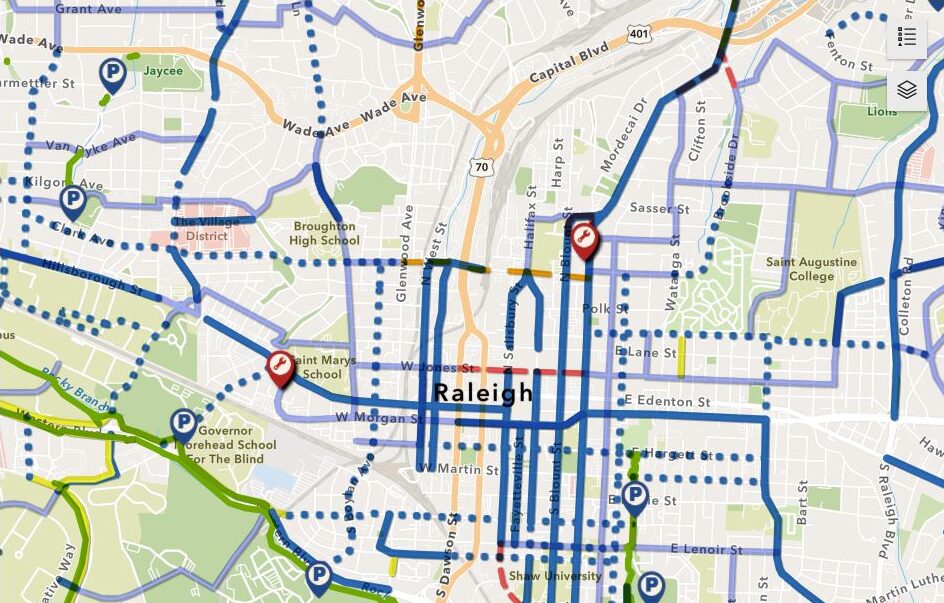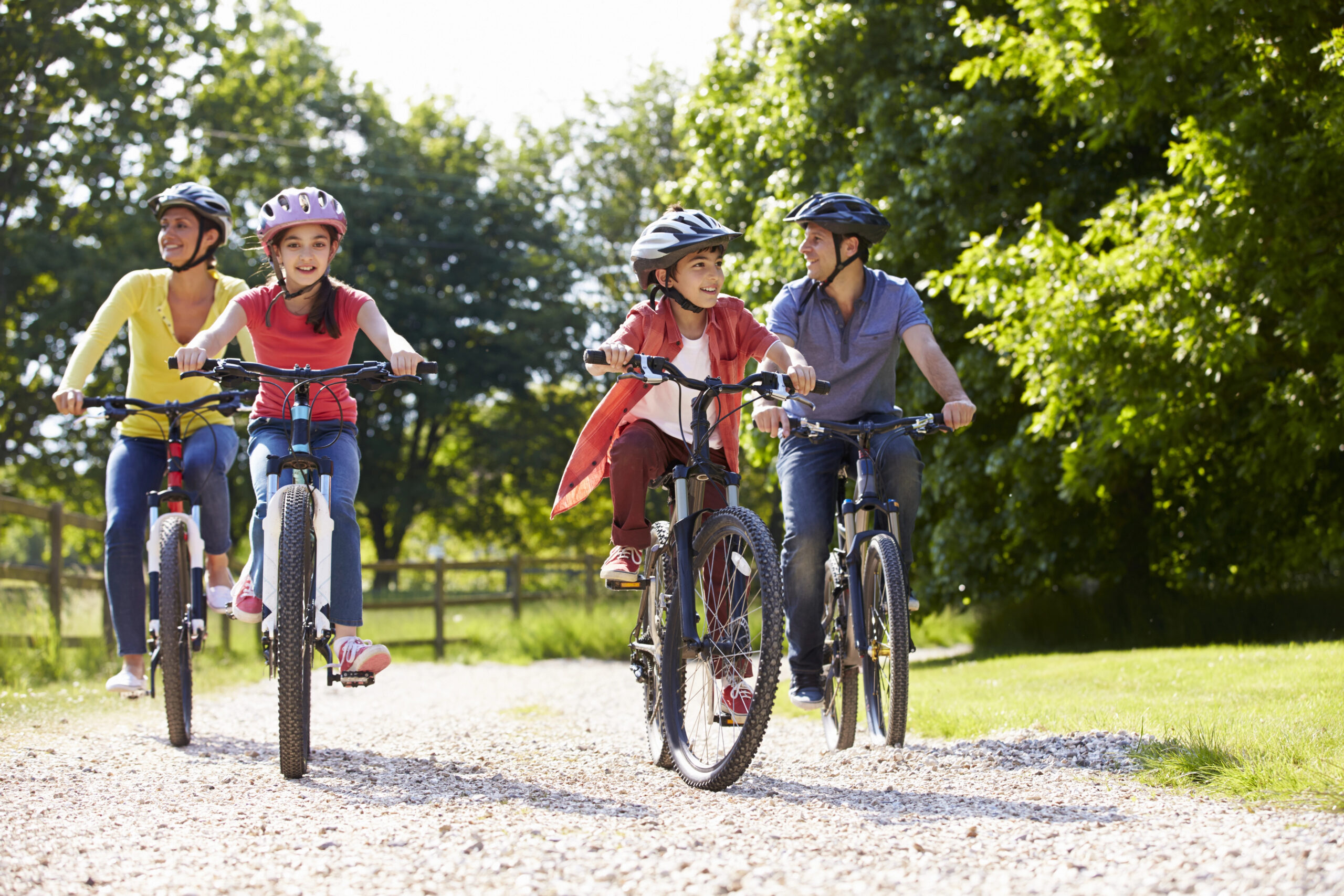
Bike Safety Basics: Get Outside and Get Active!
Renée Balyoz
Health Educator
Poe Center for Health Education
As a child growing up in the 1980s, many hours were spent outside, including biking on rural roads, past cow pastures, feeling the wind on my face. Now, as a mom, I encourage my children to ride their bikes outside, taking themselves to the library or simply getting outside for their 60 minutes of daily physical activity.
The main difference between their experience and mine is that they live in an urban environment. Bikers of today need to be aware of potential dangers of distracted drivers when sharing the road with cars.
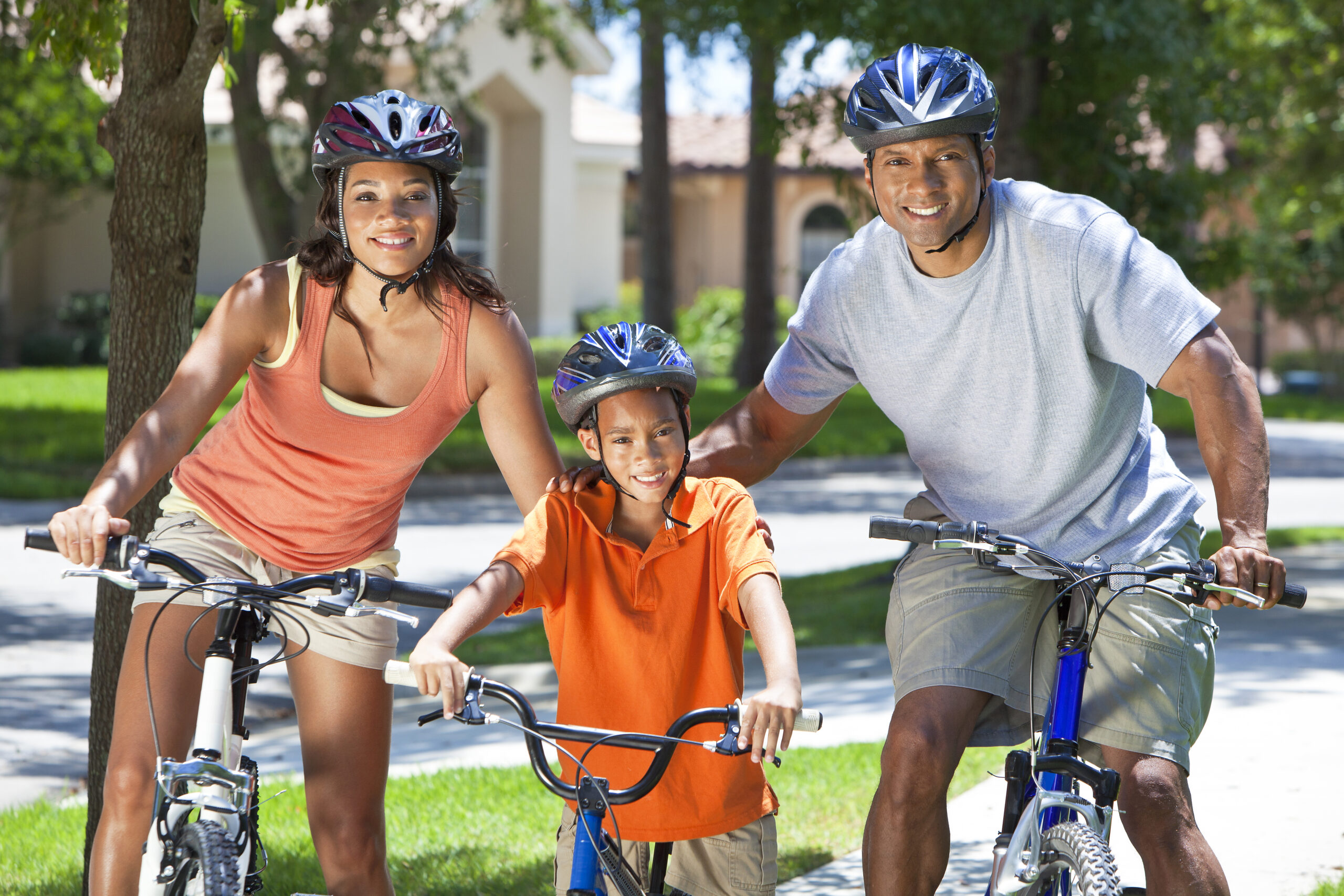
What are some safety guidelines to consider when children get ready to head out for a bike ride?
1. Check your bike for a good fit.
Ensure the bike is the proper size for the height of the child. This means the pedals should be within reach, but the child should be able to extend their leg almost straight when pedaling. The handlebars should also be in reach. If not, the bike seat needs to be higher or lower.
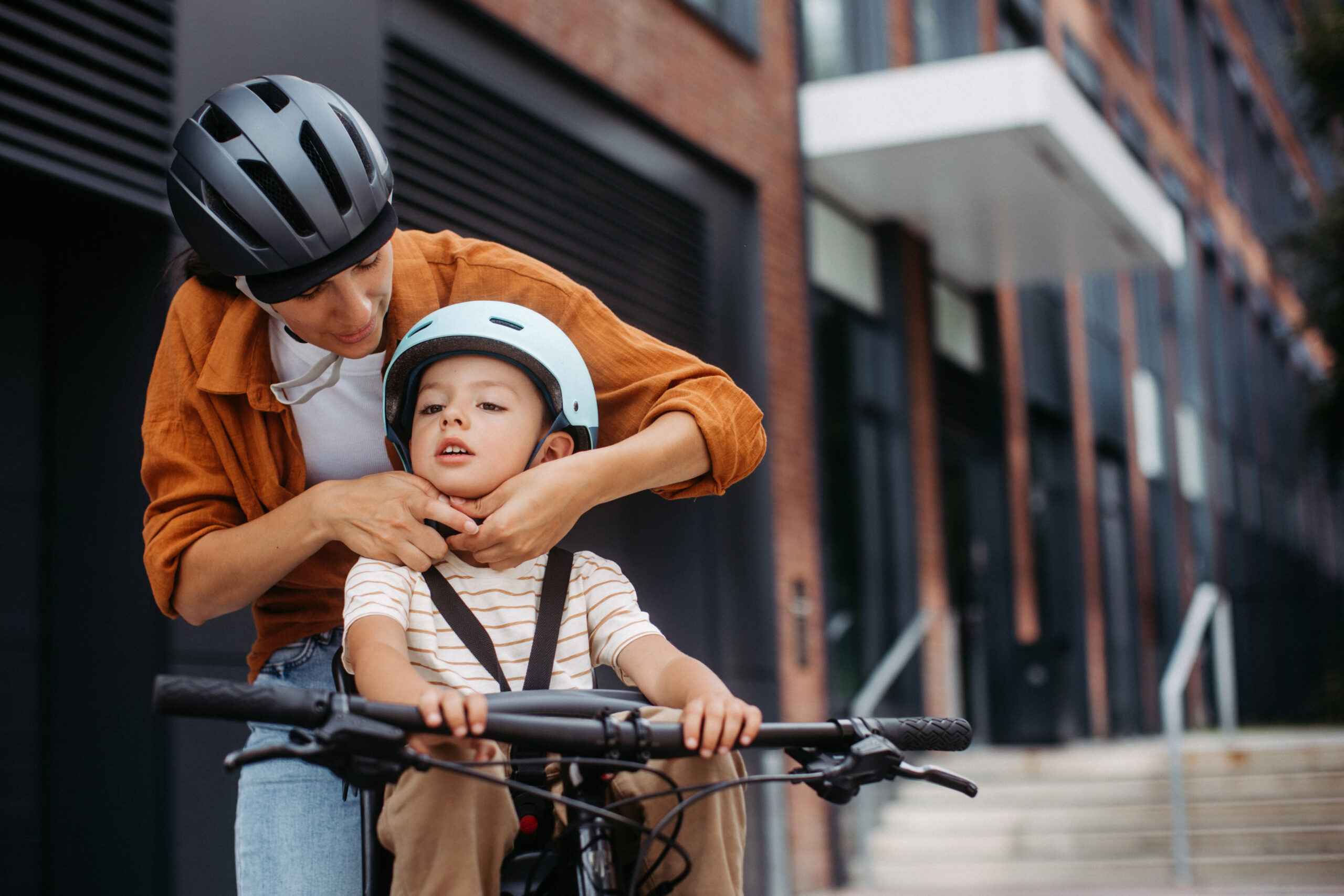
2. Check the tires for air.
If it’s been a while since the bike has been ridden, the inner tubes of the tires may need replacing. Check the brakes and gear shifts to ensure they work properly.
3. Wear a proper fitting helmet.
Check out this helmet-fitting guide. Tip: Inside a helmet is a great place to put emergency contact information.
4. Stay hydrated by bringing a water bottle.
It’s important to drink water before, during, and after exercise to replenish fluids lost through sweating.
5. Protect your skin from the sun.
Wear sunscreen with SPF 30 or higher. If you are sensitive to the sun, wear a shirt made of sun-protection fabric.
6. Start close to home and expand with practice.
When you are new to biking together as a family, practice traveling together as a group on quieter neighborhood streets, parking lots, parks and greenways. Ensure that everyone has strong biking abilities and understands personal safety hand signals before biking on busier city streets. Allow extra time for everyone to build knowledge and confidence.
7. Share the road.
It is important to teach young people traffic signs and how to share the road with cars.
Watch our reel, linked on the left, to learn the basic personal safety signals.
8. Plan the route.
Once you are ready to move onto busier roads, look for bike-friendly roads with bike lanes. If children are biking without adult supervision, know where they are headed. If they have a cell phone, location-sharing can be enabled for safety. Write an emergency phone number inside their helmet just in case.
9. Be visible to drivers.
It’s important to wear bright-colored clothing so that drivers can easily see you. Always stop at intersections in case a driver does not see you. Never assume a driver sees you. By teaching children these tactics, you are also teaching them safe defensive driving techniques for future driving.

Teaching and modeling bike safety now sets up your child for success and good health for life. Enjoy your bike ride and stay PoeFit!
Trying to find a bike trail? Use a BikeRaleigh map provided by the City of Raleigh!
This map shows bike lanes, greenways, as well as preferred routes based on bicyclist feedback and street conditions.

Featured Resource:
Safe Routes to School Wake County shares educational information on safe walking, biking, and rolling, providing ways for communities to get started. Safe Routes to School helps schools, organizations, and groups host bicycle safety days, learn to ride events, walk and roll to school days, and more.
Safe Routes to School is a partner to the Poe Center and helps us host a Traffic Safety Garden at our Fall Festival, PoeFest.
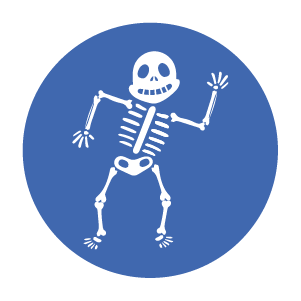
Featured Program:
This program includes both an indoor theater program and an outdoor session. Your group will be split into two groups. The first group will participate in a team-based trivia game in the theater to test their knowledge of traffic safety while walking, riding or scooting. They will learn about safe traffic system behaviors, traffic signs, personal hand signals, road markings, helmet safety, and bike adjustments.
The second group will be outside on Wake County’s first permanent Traffic Safety Course using bikes, scooters, and helmets provided by the Poe Center. This miniature village, complete with road signs, bus stop, pedestrian participation, and road markings, will encourage safe walking, riding, and scooting along roads.
Groups will switch to receive both components of the program.
Program Participants: Kindergarten – 8th Grade
Program Length: 60 minutes

